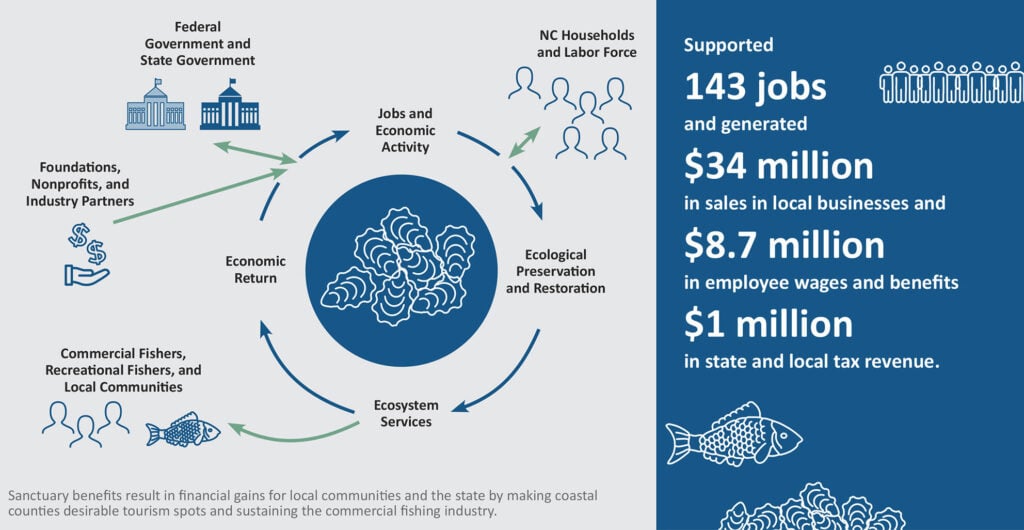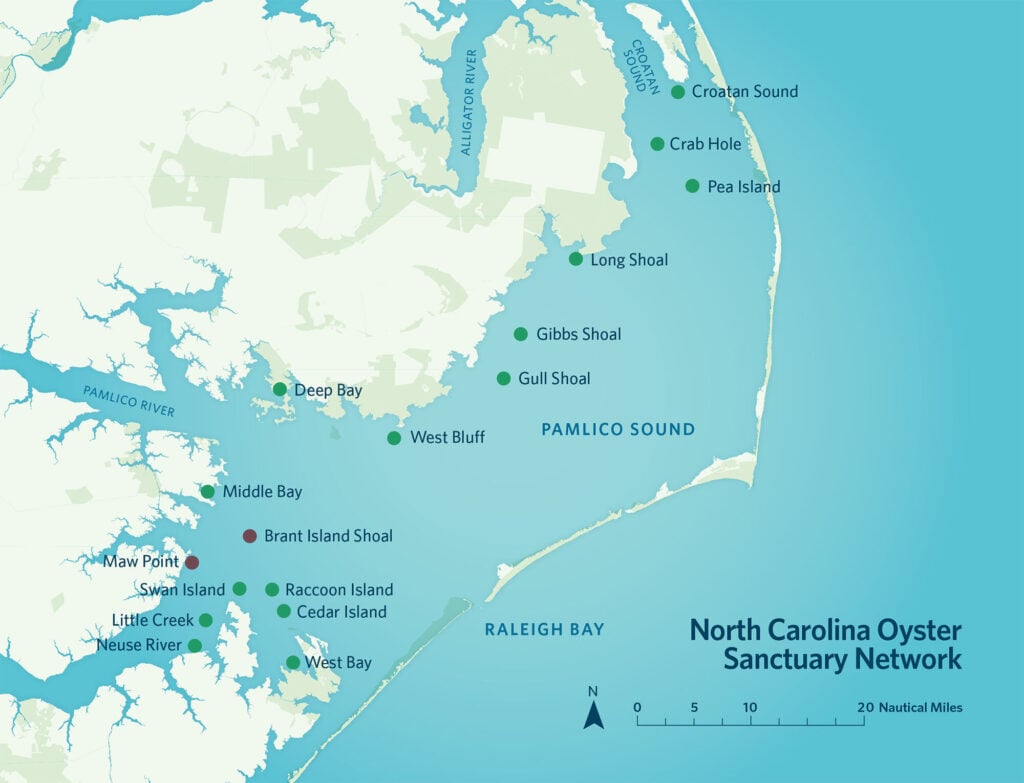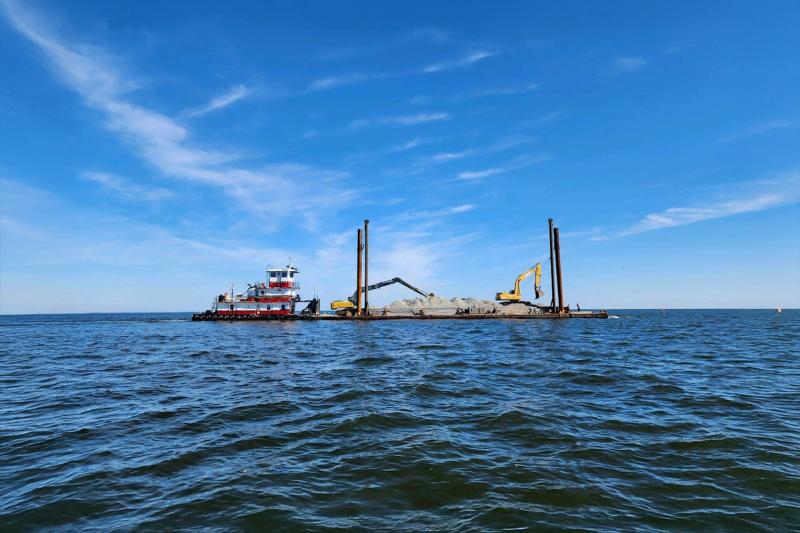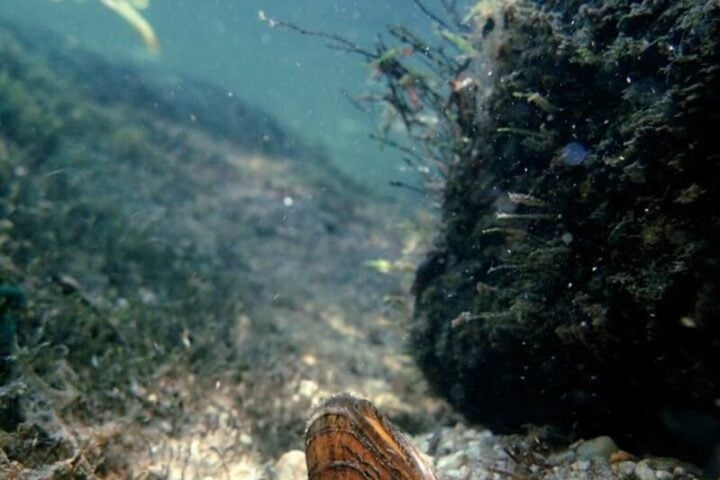Recent studies show oyster restoration projects are delivering substantial benefits for coastal economies and marine ecosystems. For every dollar invested in oyster reef restoration, states receive $1.70 in economic and environmental returns, according to NOAA Fisheries.
The North Carolina Coastal Federation reports that investments in oyster restoration have supported 143 jobs, generated $34 million in revenue for North Carolina businesses, and provided $8.7 million in employee wages and benefits.
“This work is a good shot in the arm for a lot of local businesses,” says Will Hollowell, Operations Manager at Stevens Towing Company of North Carolina, which transports materials used for oyster reef restoration. The company employs 10 to 15 skilled contractors during spring and summer months for restoration work.

The economic benefits extend beyond direct employment. Local quarries supply rock for the reefs, truck drivers transport materials, and businesses provide fuel and supplies for the operations. Hollowell notes that his company purchases about $3,000 worth of provisions every two weeks, providing “a good boost to these rural areas.”
Beyond economics, restored oyster reefs deliver critical ecological services. They support both commercial and recreational fisheries by creating habitats for hundreds of species including blue crab, shrimp, flounder, and sea bass. According to the Virginia Institute of Marine Science, oyster reefs filter water, remove algae and excess nutrients, and reduce coastal erosion by buffering wave action.
The Senator Jean Preston Oyster Sanctuary Network in North Carolina’s Pamlico Sound demonstrates the value of protected oyster reefs. While these sanctuaries represent only about 6 percent of the Sound’s oyster reef footprint, they produce 25 percent of the area’s oyster larvae.

“This network protects nearly 350 million oysters,” explains North Carolina Coastal Federation Oyster Program Director Erin Fleckenstein. “These reefs serve as an insurance policy to our oyster populations.”
The need for restoration is clear. Over the last century, North Carolina lost more than 90 percent of its oyster reef area. NOAA Marine Habitat Resource Specialist Stephanie Krug emphasizes the importance of these projects: “Investing in oyster reef restoration means investing in all of the benefits these reefs provide and the benefits of the restoration work itself.”
Marine Ecologist Max Castorani adds a measured perspective: “Oyster restoration is by and large successful, even if it’s more successful in certain places.”
Restoration techniques continue to evolve. Recent innovations include genetic improvement, oyster seeding, 3D printing, shell recycling, and acoustics technologies. The Ocean Exchange highlights the Mother Reef, a scalable, low-cost substrate designed to become essential scaffolding for oysters to grow on.
Similar Posts
Despite progress, challenges remain. Financial constraints, regulatory complexities, and public engagement are significant hurdles for oyster restoration efforts. The US Geological Survey emphasizes that acknowledging uncertainty and learning from past experiences are crucial for successful future projects.
Recognizing the value of these efforts, in 2023, NOAA’s Office of Habitat Conservation awarded the North Carolina Coastal Federation an additional $14.9 million through the Bipartisan Infrastructure Law to expand the sanctuary network to 500 acres by 2026.
For Hollowell and others involved in restoration work, the projects represent more than just economic opportunity. “I, as well as many members of our Stevens Towing family, grew up on the coast of eastern North Carolina so we look at this as an honor to be able to give back to the environment and be part of something bigger,” he says. “It’s nice to help secure it for our families and future generations to come.”
FAQ
Why are oyster reefs important to coastal ecosystems?
Oyster reefs provide multiple ecological benefits: they filter water by removing pollutants, sediment, and excess algae; create habitats for hundreds of marine species including blue crab, shrimp, flounder, and sea bass; and reduce coastal erosion by absorbing wave energy during storms. Oysters filter water, improving water quality and clarity throughout coastal areas.
How much does oyster restoration cost, and is it worth the investment?
According to NOAA Fisheries research, every $1 invested in oyster reef restoration yields $1.70 in economic and environmental returns. In North Carolina’s Pamlico Sound project, a $20 million investment supported 143 jobs, generated $34 million in revenue, and is expected to produce $38 million in ecosystem benefits through 2048. These figures demonstrate that restoration projects provide both immediate economic benefits and long-term ecological value.
What challenges do oyster restoration projects face?
Major challenges include financial constraints, regulatory complexities, and limited public engagement. Restoration projects require substantial funding for materials, labor, and monitoring. They must navigate complex environmental regulations across multiple government agencies. Additionally, successful projects depend on public understanding and support, which can be difficult to build without education about oysters’ economic and ecological importance.
How are oyster populations doing overall?
Oyster populations have declined dramatically over the past century. North Carolina alone has lost more than 90% of its oyster reef area. Similar declines have occurred throughout coastal areas due to overharvesting, habitat destruction, water pollution, and disease. While restoration efforts show promise, they currently represent a small fraction of historical oyster habitat.
What new technologies are being used for oyster restoration?
Recent innovations include 3D printing, shell recycling programs, acoustics technologies, and genetic improvement techniques. The “Mother Reef” is a new scalable, low-cost substrate specifically designed to become essential scaffolding for oysters to grow on.
How do protected oyster sanctuaries benefit fishing industries?
While fishermen cannot harvest directly from sanctuary reefs, these protected areas produce larvae that disperse throughout surrounding waters. In North Carolina’s Pamlico Sound, sanctuary reefs represent only 6% of the total oyster reef footprint but produce 25% of the area’s oyster larvae. This helps replenish harvested areas, supporting sustainable commercial and recreational fishing without sacrificing conservation goals.









![Representative Image: European Starling [49/366]. Photo Source: Tim Sackton (CC BY-SA 2.0)](https://www.karmactive.com/wp-content/uploads/2025/04/Starlings-Drop-82-in-UK-Gardens-as-Birdwatch-2025-Reveals-Record-Low-Count-Since-1979-720x480.jpg)









